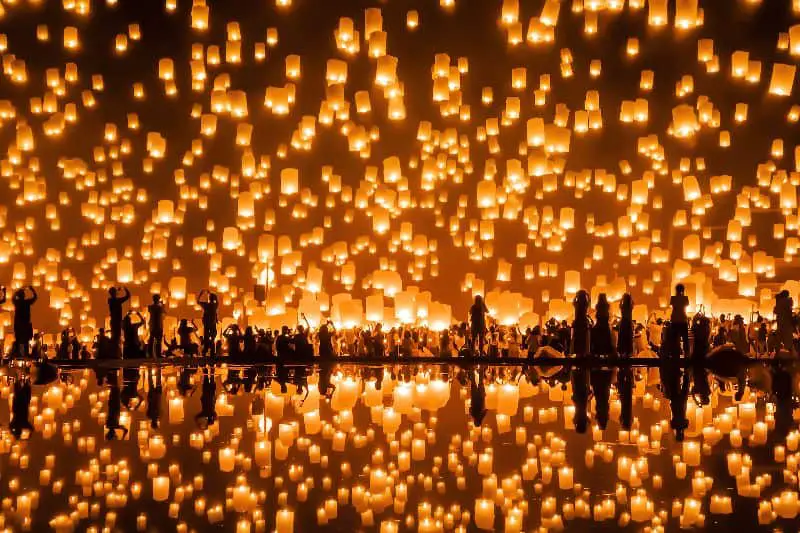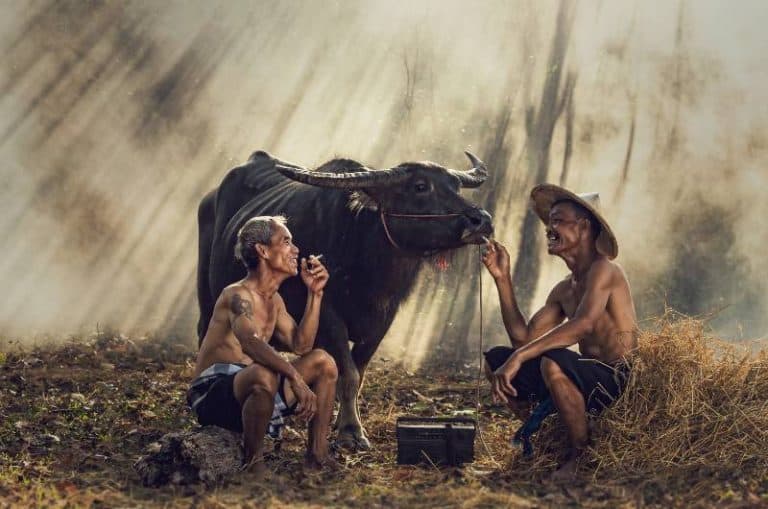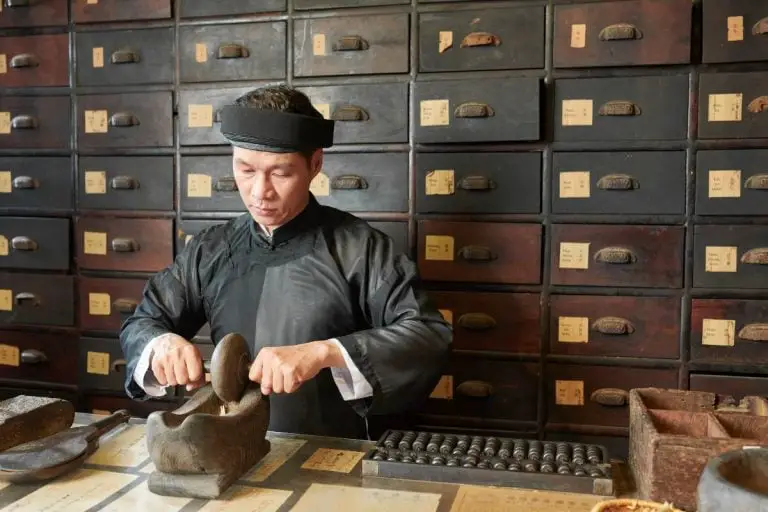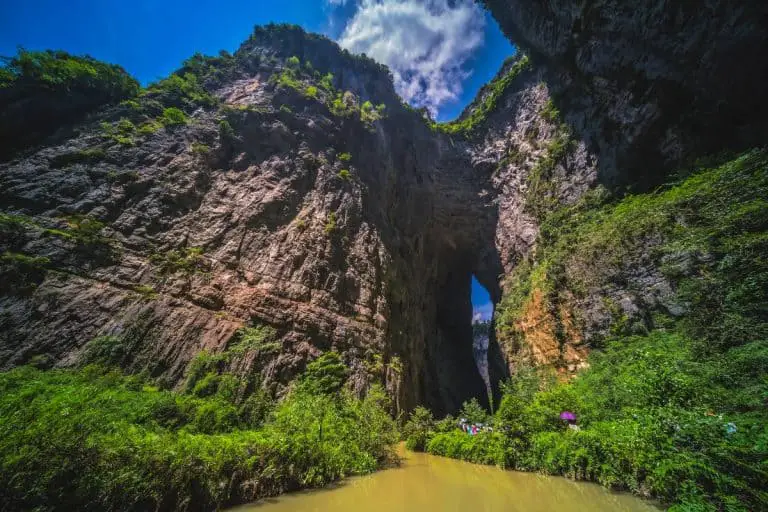Discover Thailand’s Colorful Festivals & Holidays: A Guide
Are you looking for something new and exciting? How about a cultural exploration that will leave you in awe? That’s exactly what awaits you when you learn more about Festivals in Thailand and holidays. From ancient customs to modern interpretations, these colorful celebrations bring together Thai people from all walks of life to celebrate their history and culture. In this guide, we’ll take a look at some of the must-see events that occur throughout the year – from Songkran, the Water Festival, and Loi Krathong to bustling Chinese New Year festivities – so join us on this fascinating journey!
There are many events and holidays in Thailand that you could enjoy even as a tourist, from the Water Festival to the Chinese New Year. Festivals and holidays in Thailand are some of the most colorful, exciting, and vibrant gatherings around the world, providing an opportunity to explore the country’s history and culture.
Key Takeaways
- From Songkran, the Water Festival, to Loi Krathong and Chinese New Year festivities, discover these must-see events that bring together Thai people from all walks of life.
- Learn about ancient customs and explore modern interpretations of traditional events in this cultural exploration of Thailand festivals and holidays.
- Make sure to respect any cultural norms you encounter when celebrating these unique events and embrace the culture of Thailand.
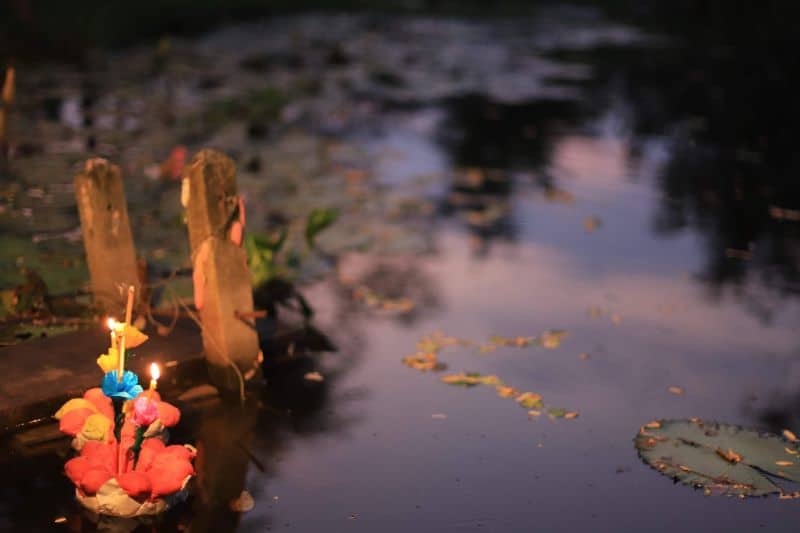
Major Festivals and Holidays in Thailand
Songkran Festival (Thai New Year)
Songkran is the robustly celebrated New Year Festival in Thailand and happens every April, routinely starting on the 13th of April, considered a National Holiday. Known for its usually three-day long holidays but with the possibility to last up to five days depending on if any weekends take place around, this festival features various rituals (and also Buddhist rituals) and practices unique to Thailand. While some celebrate by gathering at temples for prayer and almsgiving, the most anticipated part remains the water splashing.
From gentle sprinkles from a cup to an all-out wild duel from water cannons, anyone and everyone douses each other in souvenirs of good luck for the upcoming year – although it can get too extreme when recklessly joined by drunk teens.
History and Significance
For thousands of years, the significance and meaning behind Songkran have been a central part of the culture in Thailand. Derived from an ancient Sanskrit language, ‘Songkran’ literally translates to ‘enter’ or ‘pass into’; signifying the transition of the sun from one astrological sphere to another.
Every April, the sun transitions from Aries to Taurus; a period is known as Maha Songkran or the Great Songkran and marks the beginning of a brand new Thai New Year. It is believed that such a festival originated with a Hindu spring festival in India, celebrating the arrival of the harvest season. Although celebrated by other nations in Southeast Asia, Thailand is widely recognized for its unique celebration practices. Generally, it is during this festive time that numerous locals reunite and pay respects to their elders through water-pouring rituals.
Celebrations and traditions
The second day of Songkran is known as Wan Nao and it is seen as a day to honor elders. People typically prepare rose water, jasmine water, and Nam Op scented water to wash the feet of their parents in the aptly named Rot Nam Dam Hua ceremony. In turn, the parents give their blessings and place jasmine floral garlands on the younger’s heads.
During this day, many will also make sand stupas – called Chedi Sai – along with their local temples for spiritual offerings. An added bonus includes creating a dash of good karma by releasing animals like caged birds or fish into waterways. This delightful tradition can often be seen all over Thailand and is one of the best ways to experience modern-day Songkran festivities; observing all sorts of customs designed to fill families with culture and joy!
Loy Krathong Festival
Loy Krathong is a unique festival that takes place in Thailand to show respect to the water spirits and Buddha. It’s a beautiful event celebrated annually and has its roots in Hindu Brahmin tradition. As part of the ceremony, participants make floral offerings or offer thanksgiving prayers before slipping decorated rafts made from banana leaves, flowers, or incense onto rivers and streams.
Onlookers can witness a magical sight as all these illuminated floats drift downstream – it’s truly mesmerizing! This ancient ritual is a meaningful experience not only for locals but also those visiting Thailand who are lucky enough to attend. Loy Krathong remains one of Thailand’s most beloved festivals – an unmissable event on the calendar and sure to be an unforgettable experience no matter how you take part in it.
History and Significance
Every year in Thailand, Loy Krathong is celebrated to honor the Goddess of Water, Pra Mae Khongkha, who provides a much-needed supply that sustains the land. This ancient tradition first originated in the kingdom of Sukhothai around 800 years ago and continues to this day as a way for people to express their gratitude and pay respect to both her and the Buddha.
Those celebrating Loy Krathong will create a small vessel out of natural materials such as banana leaves or wood and load it with lit candles, gifts, and incense before sending it off on the rivers and lakes belonging to the Goddess.
As these water lanterns drift away, participants seek an apology for polluting her waters and offer thanks for her abundant bounty throughout the previous year.
Celebrations and traditions
The Loy Krathong Festival is celebrated across Thailand and offers numerous ways to commemorate it. People can begin the parade by making their own Krathongs with friends and family while some opt to purchase them from local shops.
Once nightfall has commenced, many heads over to nearby waterfronts or temples to perform religious rituals while releasing the Krathongs they created in unison. As part of the celebrations, visitors can gaze at firework shows, marvel at gargantuan Krathongs which are designed for contests or even participate in endless beauty competitions hosted at the festival sites.
Chinese New Year
Experiencing the Chinese New Year in Thailand is always a truly special time, with the enchantment of local streets being transformed into vibrant and joyful places. On the celebration day, most of the people are dressed in traditional red clothing as that color symbolizes good luck and prosperity for the coming years. People come together to watch fireworks, feast on delicious dishes, visit temples, and make offerings for good fortune in the upcoming year.
Furthermore, it’s also common to see dragon dancers performing maneuvers along Thai streets, watch a video here as they battle mythical demons and end with a grand show of singing and acrobatics during their final bow. Though different cultures may be celebrated throughout Thailand all year round, nothing quite compares to how the Chinese New Year gaiety will bring joyous moments shared between everyone observing this delightful holiday.
History and Significance
The festivities celebrating the beginning of the Chinese New Year typically last for between two and three days. Despite the fact that it is not a legally recognized public holiday in Thailand, the event is still frequently observed there due to the country’s large Chinese population. During this time, families get together to honor their ancestors and spend quality time together. Thousands of people travel all the way from China and other parts of Southeast Asia to be with their families during this time so that they can celebrate the festival.
People flock to pray for good fortune in the next year, filling the temples and shrines with their presence. It is a traditional practice for members of a family to give one another red envelopes filled with money and little gifts.
These envelopes are known as ang-pao in Hokkien and lai see in Cantonese. The streets become overrun with food booths, dragon dancers, and even acrobats who mesmerize viewers with their shows shortly after midday. They form enormous human pyramids and spin on poles that are close to 12 meters (about 40 feet) in height.
The color red is commonly connected with the beginning of the Chinese New Year. In the days preceding the holiday, people adorn their homes with red paper lanterns, Chinese calligraphy banners, and posters. They also wear red clothing.
They set out trays filled with tangerines, oranges, and a wide variety of other kinds of dried fruit. On the night of the New Year’s holiday, according to urban legend, a legendary beast known as Nien would destroy people’s homes. To dissuade Nien from his destructive rampage, people would light firecrackers and leave offerings for him.
On the day that is really designated as New Year’s Day, it is customary to take the day off and relax at home. On this day, it is a common belief that individuals shouldn’t use sharp items, dispute with one another, or perform any housekeeping because doing so will bring bad luck. In honor of their forebears, they partake in a feast known as “weilu” that is held in a community setting. They prepare a wide variety of traditional meals, some of which are shunned because of the belief that eating them will bring bad luck, such as tofu.
Celebrations and traditions
On the last day of the New Year celebrations, there is a festival called the Lantern Festival. During this festival, people decorate their homes with exquisitely crafted Chinese paper lanterns and hang them from their balconies. This is a particularly beautiful event, especially when viewed from a distance because street after street is lit up in crimson. This festival of lighted lanterns is traditionally held on the night of the first full moon after the Chinese New Year.
The general population of Thailand has enthusiastically taken to this festival. Every year, the Thai princesses Ubolratana Rajakanya, Maha Chakri Sirindhorn, and Chulaborn Walailak can be seen at various shrines paying their respects and praying for a year filled with success and happiness.
Vesak Day (Buddha’s Birthday)
“Vesak,” which refers to the Day of the Full Moon that occurs in the month of May, is the holiest day in the Buddhist calendar for millions of people all over the world. Two and a half millennia ago, in the year 623 B.C., on the day that we now celebrate as Vesak, the Buddha was born into this world. Additionally, it was on the Day of Vesak that the Buddha acquired enlightenment, and it was also on the Day of Vesak that the Buddha, who was in his eightieth year, passed away.
History and Significance
Asanha Bucha Day is a special day steeped in history and religious tradition. Celebrated across many countries with Theravada Buddhist populations, including Thailand where the holiday originates, it commemorates the day over 2500 years ago when Lord Buddha gave his first sermon after achieving nirvana or ‘the enlightenment’. The date shifts each year according to the lunar calendar cycle, typically falling between late July and early August on the full moon of the eighth lunar month. Marking this special day helps followers honor their faith and celebrate one of Buddhism’s most important stories.
Celebrations and traditions
One of the religious traditions is Visakha Buja Day, or Vesak Day as it is also known in Thailand, which is one of the most significant holidays for Buddhists living in the country. On this special day, Buddhists create merit by carrying out a range of activities such as visiting temples, swearing to uphold layman’s precepts, providing food to monks, and listening to Dhamma talks.
In the late afternoon or evening of Visakha Buja Day, many people participate in a procession that revolves around a chapel while carrying flowers, incense sticks, and candles- often making their next visit at dawn.
Additionally, Visakha Bucha Day requires extra efforts of joy and donation to those who are less fortunate such as elderly people, disabled people, and the ill. To this day, countless Buddhists across Thailand offer both monetary and other donations to many humanitarian organizations. All these contributions make the holiday a meaningful one that not only connects Thai people with their cultural roots but also helps build kind ties between humans and society.
Of course, if you want to see these festivals, you have to know what sorts of transportation can you use to reach these places, read an article here that will help you with the different sorts of transportation available in Thailand.
Regional Festivals and Holidays
Phi Ta Khon Festival (Dan Sai, Loei Province)
Thailand is a place that is rife with its own ghosts and demonic creatures that are exclusive to this nation. The Phi-Ta-Khon festival, which is hosted in the province of Loei, is considered to be one of the most well-known festivals that takes place to honor spirit creatures.
History and Significance
Centuries ago, it is said that Prince Vessantara, who was the Buddha in his past life, took a prolonged journey. When he never returned, his followers assumed he had perished. Courageously enough, one day he returned unscathed and safe.
This caused tremendous commotion among the followers as they were overwhelmed with joy and happiness as if their spirits were unleashed from the shackles of exile. This spurred such a grand feast that there are legends of it even awakening the dead from their slumber!
To commemorate this momentous event, Bun Pawet has been celebrated over time in areas like the Dan Sai district in Thailand’s growingly popular Loei province. It is a delightful festival full of costumes and dancing amidst the streets – which includes wild masks strongly resembling those thought to have disturbed the repose of deceased persons – all in joyous celebration of Vessantara’s return!
Phi Ta Khon Festival
What was once a relatively simple children’s festival has evolved into something much more – an entire culture of elaborately crafted masks and costume have become the primary focus of this festival. With their threatening teeth and intimidating eyes, these monstrous masks are not just decorative, they are said to bring bad luck only to those who keep them after the festivities have come to a close.
However, as attitudes towards the masks have started to change and with tourists on the rise, artisans now find themselves selling this captivating artwork for sometimes thousands of Bahts. Assembling such profoundly detailed costumes is no small feat either – hours, even days can go into designing each costume such that it still allows a full range of movement while simultaneously attracting locals and tourists alike.
Celebrations and traditions
Every June, the townspeople of a small village in Thailand take part in an exciting three-day festival. Most of the action takes place on the first day when rowdy villagers attempt to wake the spirit of the Mun River – Phra UPhakut – for protection. The day is full of games, concerts, and parades that feature locals dressed in their traditional khon masks and cowbells.
These costumes are used to mark the presence of spirits and during the revelry, they can be heard clanging up and down the streets. This is an event that locals look forward to all year long, as it serves as a great opportunity to come together and celebrate their culture.
Rocket Festival (Yasothon Province)
The locals of Thailand have been celebrating their Bun Bang Fai Festival for centuries. This long-standing celebratory tradition is a merit-making ceremony that centers around constructing homemade rockets and aiming them at the sky in order to appease the rain gods for a fruitful monsoon season.
The rocket launch is an iconic element at this festival, and one with exciting implications! Before the planting of crops can take place, it is important that there be enough water to ensure success. It is no wonder why the locals are so enthusiastic about this ritual and make sure it takes place every year in hopes of having a successful start to their farming season.
History and Significance
The Rocket Festival of Southeast Asia is believed to be a derivation of Buddhist fertility rituals, and it even reflects Lao folk culture up to this day! This festival is traditionally observed just prior to the crop plantation period, and it can be seen as a way for people to celebrate before beginning their hard work.
More than being simply a legendary celebration, scholars are interested in viewing the Rocket Festival from an academic perspective as it could provide insight into rocket festivals throughout East Asia, not to mention socioeconomic development in Southeast Asia. Truly, this festival has made a lasting impression on history.
Celebrations and traditions
The last day begins as it always has, with the typical dancing cultural performances and shows. However, the most important event of the day is the launch of the rockets. During this event, participants launch their own handcrafted bamboo rockets, which then soar high into the atmosphere. After then, the residents say prayers asking for a lot of rain.
The final day of the event also marks the beginning of the rocket launching competition, during which a panel of judges will evaluate each rocket based on how far into the sky it travels as well as its aesthetic appeal. The rockets that fail to launch successfully are disqualified, and the owner of the rocket must either jump into a mud pit or be completely covered in mud.
Mud is claimed to minimize the severity of burns that would have been caused due to the misfire, so this punishment, in addition to being a punishment in good taste, also serves as a safety function. Mud is thrown at the offender, and they are forced to stand in it.
This serves as a timely reminder to both the attendees and those merely spectating that the festival is not only about having a good time but that it also carries with it the potential for harm on occasion. Therefore, prior to taking part in the competitions, appropriate safety measures need to be implemented.
What was once a straightforward event involving the launching of rockets has now developed into a well-known festival. It is not enough to just cut rockets out of bamboo and submit them to the judges; instead, they are mounted on enormous carts that have spinning wheels to enhance both their beauty and their strength. There is a wide variety of rockets available, ranging from one kilogram to one hundred and twenty kilograms in both size and destructive potential.
Buffalo Fighting Festival (Surin Province)
History and Significance
The Buffalo Racing Festival, which has been celebrated in the Chonburi city hall in the province of Thailand for more than 140 years, is one of the most unique festivals in the country. During this annual event, participants must run a race of around 100 meters while atop a buffalo – an activity that has expanded to include foreign guests.
With cries and cheers from the enthusiastic crowd, they will set off on their race previously trained with a model course. It is said to have originated in the 19th century when farmers wished to give thanks to the animals that helped them in their fields. Locals look at the festival as an important occasion for reminding younger generations about the significance of buffalo within farming communities.
Celebrations and traditions
Taking place in Chonburi province near Bangkok, farmers come to race their prized animals with hopes of taking home the coveted best buffalo title. The racing events vary from colorful parades, tug-of-war matches, motorcycle competitions and more – all of which bring much joy and celebration to those who come to watch or take part.
Festivals and Holidays for Tourists
This list includes public holidays, national holidays included, along with other key festivals and events:
- Chinese New Year.
- Buffalo Fighting Festival (Surin Province)
- Songkran – Thai New Year.
- Boon Bang Fai – Rocket Festival.
- Rocket Festival (Yasothon Province)
- Phi Ta Khon Festival (Dan Sai, Loei Province)
Introduction to festivals and holidays suitable for tourists
Thailand is renowned for its vibrant culture, and the best way to experience it firsthand is to attend one of the numerous festivals and holidays that take place throughout the year. These events offer tourists an opportunity to gain a unique insight into Thai culture, from traditional performances and rituals to more modern festivities.
From local religious ceremonies like Songkran to events such as coronation day, mother’s day, father’s day, vegetarian festival, and royal ploughing ceremony, there is something for everyone. From those looking to embrace traditional Thai culture to those who want to feel the energy of a modern celebration, Thailand has it all!
Tips for tourists to experience festivals and holidays in Thailand
1. Show proper deference toward the Buddhist temples and sculptures.
When paying a visit to a Buddha statue or a center of worship anywhere in Thailand, it is important to remember to behave respectfully toward the local religion. This includes wearing modestly (including covering the shoulders and knees), removing shoes when encouraged to do so, and maintaining a quiet volume of voice, particularly in the presence of persons who are praying.
Keep in mind that these are houses of worship in addition to being tourist attractions in their own right. In addition to this, you should not take photographs of Buddhas with your back to them (such as a selfie). This is deemed impolite, yet sadly, there are still many images of people acting in this manner.
2. Please remove your shoes before entering.
When going inside a Thai person’s home or a Thai business, it is customary to remove your shoes. This is another one of our travel recommendations for Thailand. When entering a home in Thailand, one should remove their footwear out of respect for the host. The vast majority of establishments will have a sign posted in the lobby indicating that shoes are not permitted inside.
If you have any doubts at all, you should always check with someone else before going inside. This is of the utmost significance when visiting holy temples, monuments, and other sites of devotion. However, keep an eye out for warnings!
3. It is not appropriate to show disrespect to the Royal Family.
The Chakri dynasty is the reigning dynasty of the Kingdom of Thailand at the present time. It is a violation of the law in Thailand to threaten, speak ill of, or otherwise criticize members of the Royal family. This even includes doing so on purpose while walking on Thai currency (Thai Baht), since the image of the King is printed on the bills. If you want to stay out of trouble while you’re on the road, make sure to steer clear of this. When planning a trip to Thailand, this is without a doubt one of the most essential pieces of information to have.
Suggested destinations for festivals and holidays
All of the festivals we have mentioned above are great experiences, and there are many more to choose from. Here is a quick summary of some of the best Thai festivals to time with your Thailand holiday:
Chinese New Year – This important festival is celebrated all over Asia, and it’s a great way to learn about Chinese culture as well as celebrate the start of a new year in Thailand.
Loi Krathong – Celebrated nationwide, this is one of Thailand’s most beloved festivals. The highlight is when people release floating lanterns into the air, creating a magical atmosphere.
Songkran – Thailand’s traditional New Year is celebrated in April with water fights and parades throughout the country.
Vesak Day (Buddha’s Birthday) – This holiday marks the birth of the Buddha. It is celebrated across Thailand with religious ceremonies, parades, and other festivities.
Phi Ta Khon Festival- This children’s festivity has dramatically changed over the years – now it centers around elaborate costumes and masks, captivating onlookers with fierce-looking teeth and striking eyes. Not only are these masks a visual delight; but they also bring misfortune for those who keep them after the carnival ends!
The Rocket Festival – This festival is believed to have stemmed from Buddhist fertility rituals and continues to mirror Lao folk culture even today! It takes place just before the crop plantation season, allowing people to revel in anticipation of their laborious efforts ahead.
Buffalo Fighting Festival- Held in the Chonburi province near Bangkok, farmers gather with their beloved buffaloes to partake in a range of thrilling activities for the chance to win the best buffalo. From vibrant parades and tug-of-war games, to motorbike competitions – these exciting events bring tremendous joy and festivity to spectators and participants alike!
Ghost festival – The festival is celebrated in the agriculturally driven Dan Sai district. It is situated in the Loei Province of northeastern Thailand. This tradition is unique to Dan Sai in Thailand but inculcates elements from other festivals such as the ‘Rocket Festival’ from Isan.
Thailand’s Festivals and Holidays FAQs
What is the Songkran Festival and why is it important in Thailand?
Songkran has been an age-old Thai New Year celebration, signifying progressive motion and joy with the use of water as its symbolic expression. Its name is derived from Sanskrit which translates to “move forward” – a fitting title for this festival that celebrates goodwill, love, compassion, and thankfulness through water play.
How is Loy Krathong celebrated in Thailand?
On the Loy Krathong celebration, locals come together at rivers, lakes, and canals to launch decorated lotus-shaped rafts that are adorned with flowers, scented candles as well as incense. The word ‘krathon’ means the canoe or raft while ‘loy’ stands for floating away.
What are the regional festivals and holidays in Thailand that are a must-see for tourists?
Tourists in Thailand should not miss the chance to experience some of the country’s regional festivals and holidays, such as the Rocket Festival in Yasothon Province, Buffalo Fighting Festival in Chonburi province, Phi Ta Khon Festival in Dan Sai district of Loei Province, and Loi Krathong in the entire country.
What are the cultural and traditional practices associated with Vesak Day?
Venerated by Buddhists and some Hindus as Buddha Jayanti, Buddha Purnima, or simply Vesak Day, the occasion celebrates the life of Siddhartha Gautama—popularly known as Buddha. All three milestones—birth, enlightenment, and death—are believed to have occurred on the same day during his lifetime. Although celebrated in May when a full moon shines according to lunar days, due to Buddhist cultural diversity celebrations take place on various dates worldwide.
How can tourists best experience the festivals and holidays in Thailand?
The best way for tourists to experience the festivals and holidays of Thailand is by directly participating in the activities. Whether it’s releasing a krathong into the water, constructing elaborate masks for Phi Ta Khon Festival, or watching the buffalo fighting competitions – these experiences are sure to be unforgettable!
Tourists should also make an effort to learn about the cultural and traditional practices associated with each festival to gain a greater appreciation for the country’s rich heritage and traditions.
What is Buddhist Lent?
Buddhist Lent lasts for a three-month period during the rainy season. This is one of the public holidays for government offices including immigration offices and schools. The private sector such as banks, commercial centers, and entertainment centers will remain open for business. This is one of the Buddhist holidays in Thailand.
Conclusion
Thailand’s festivities and holidays are an important part of their culture as they provide traditions, folklore, and communal bonding over the centuries.
From Songkran Festival to mark Thai New Year to the Loy Krathong Festival to honor water spirits and Vesak Day celebrated to honor Buddha’s Birthday, these festivals provide chances for Thais to come together and revere the past. For a foreign visitor or resident in Thailand, these festivals offer a window into the amazing heritage of this country.
The ceremonies, customs, and rituals observed during these occasions are real-life applications of Thai folklore that pay tribute to traditional values. Given this significance, understanding more about these cultural symbols helps increase respect for local traditions while preparing tourists with valuable insight before visiting.
To learn further information on Thailand’s intriguing festivities and holidays, I recommend subscribing to our newsletter! This way, you won’t miss out on any upcoming festivals and their celebrations taking place in the Land of Smiles.
